Battle Of The Oranges: Inside Italy’s Most Exciting Food Fight
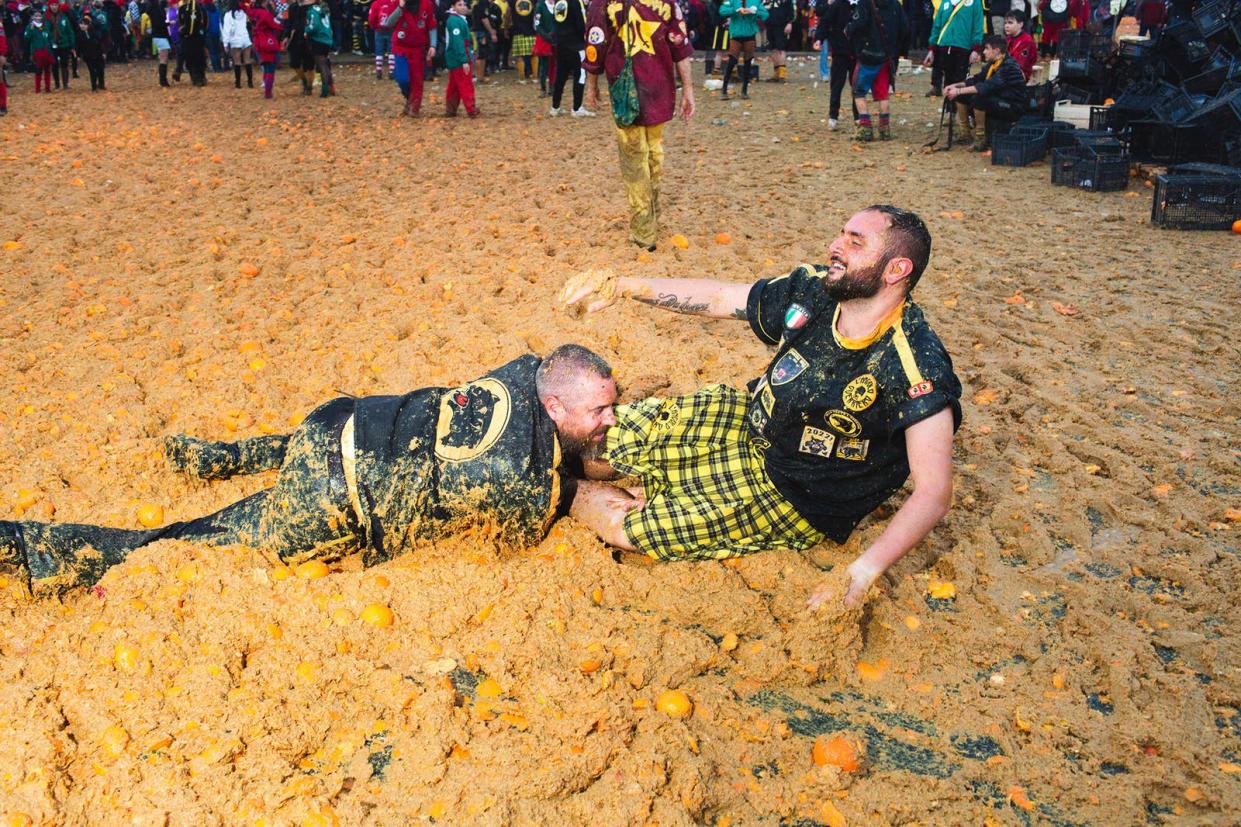
Members of Team Pantere wrestle in a thick layer of orange pulp during the Battle of the Oranges at the Carnival of Ivrea on Feb. 19, 2023.
Well, this is surely another way to get your daily dose of vitamin C. For hundreds of years, the Northern Italian city of Ivrea, about an hour and 20 minutes west of Milan, has held an annual three-day event, called the Carnival of Ivrea. Its main attraction is the Battle of the Oranges, which has become one of the world’s largest food fights.
Though there are different accounts of its origin story, this ritual calls back to the fall of an oppressive ruler who controlled the city during the Middle Ages, according to legend. Supposedly, when the despised leader was overthrown, locals pelted stones at his castle, leading to its destruction. For years, this event would be commemorated in Ivrea and since the 1800s, oranges symbolize the stones thrown during the reenactment.
For the battle, groups are organized by wearing a color and uniform, with team names including “Team Picche” and “Team Morte.” Groups of people on horse-drawn carts riding through town act as the tyrant’s troops while the aranceri, or orange throwers, are on foot throwing oranges at the people on the carts, signifying liberation from their ruler. The oranges, mainly from Calabria and Sicily, are composted afterwards to become natural fertilizer.
“For us, it’s a passion that’s passed down through the generations. It’s more important than Christmas,” one reveler told BuzzFeed News. He added, “I love the adrenaline of throwing oranges, fighting alongside my friends. We’re all united. We celebrate together independently from the team.” Due to COVID, the Battle of the Oranges hasn't happened since 2020; the only other times the event’s been canceled were due to World War I and World War II. The first day of this year’s Battle of the Oranges had 19,800 tickets sold and a total of 30,000 participants, which is a record for the gathering, according to the event’s organizers. This year there were 9 teams on foot, 47 wagons, and about 10,000 aranceri.
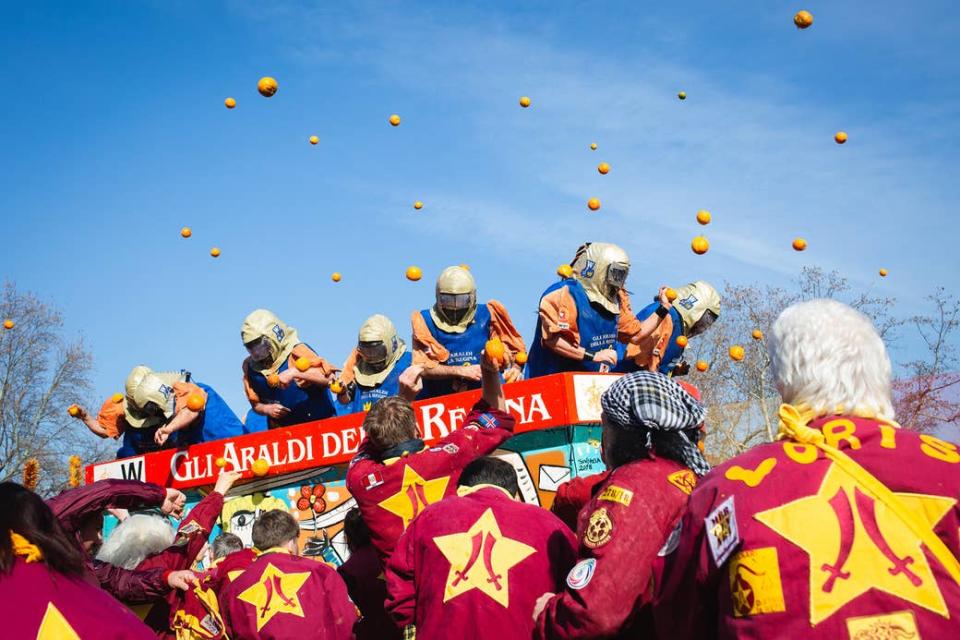
Team Mercenari bombard a float with oranges.
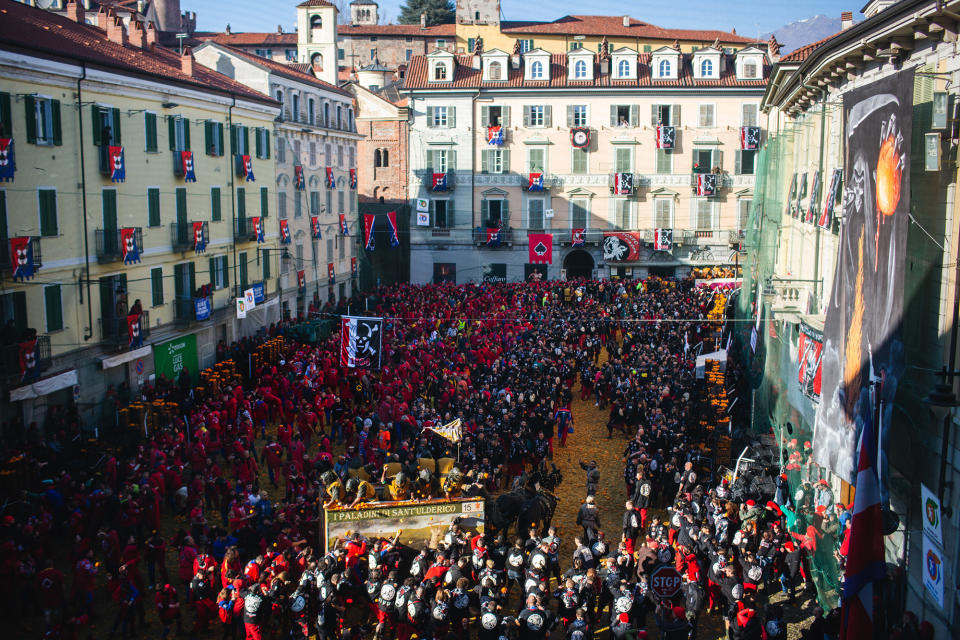
The square of Ivrea’s City Hall during the Battle of the Oranges
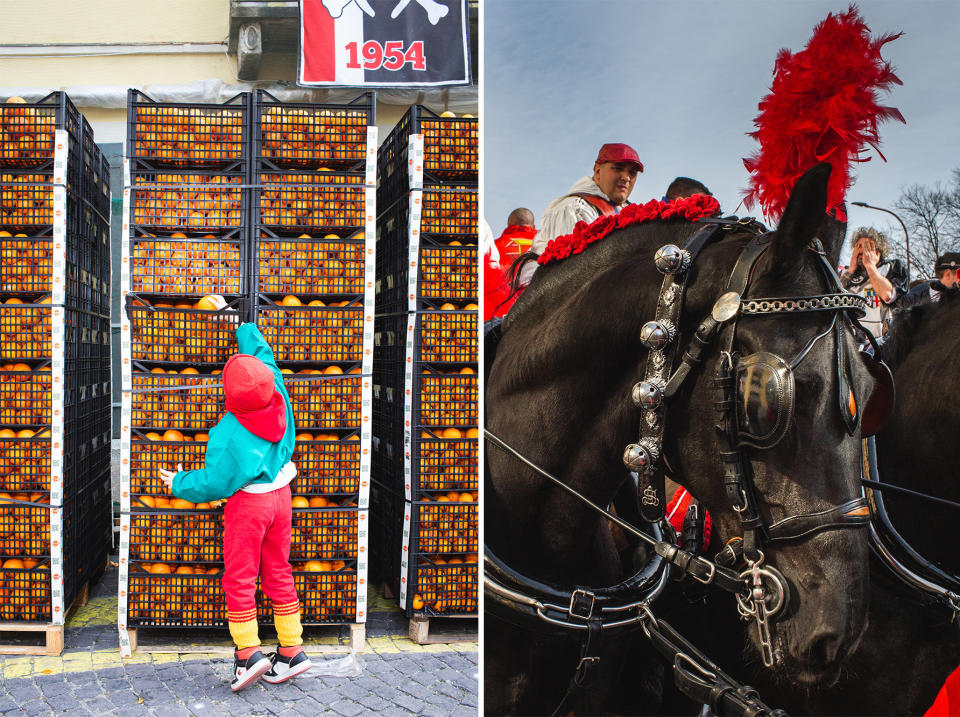
Two scenes before the beginning of the Battle of the Oranges: A child picks an orange from a pile of boxes (left), and the horses that pull the floats line up (right).
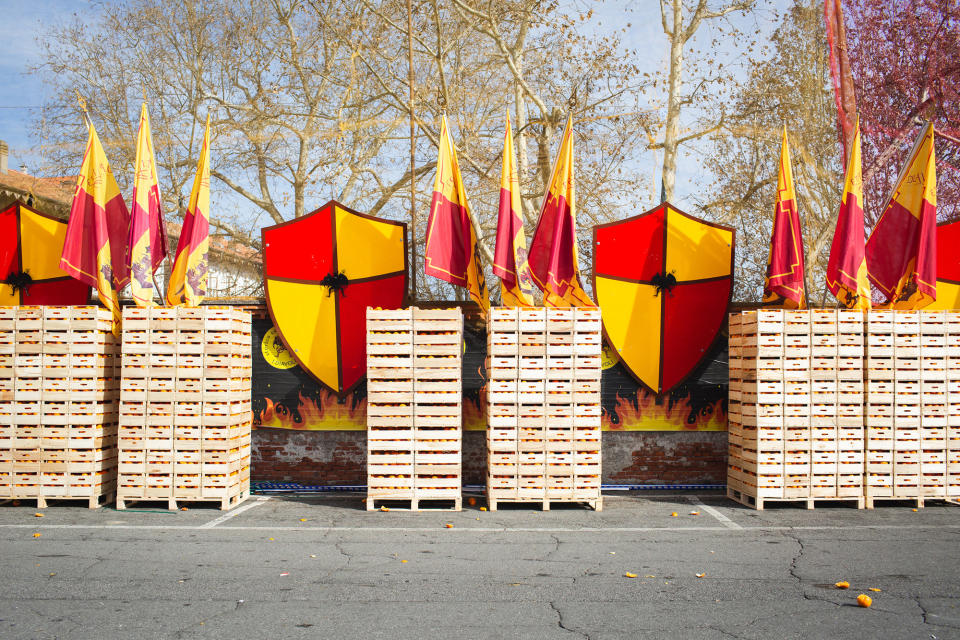
Team Diavoli’s crates of oranges before the event
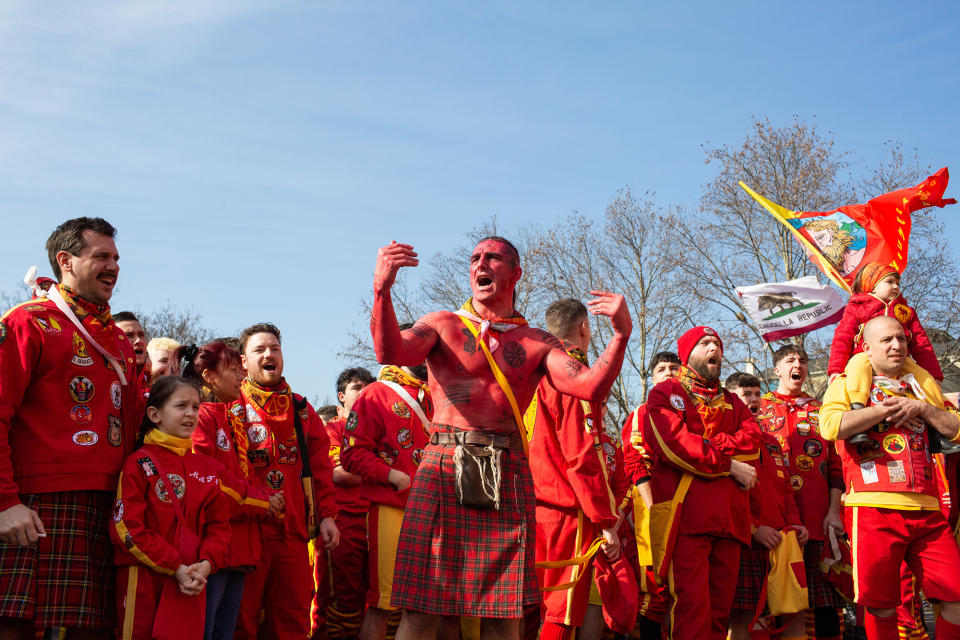
Team Diavoli cheer up before the beginning of the Battle of the Oranges.
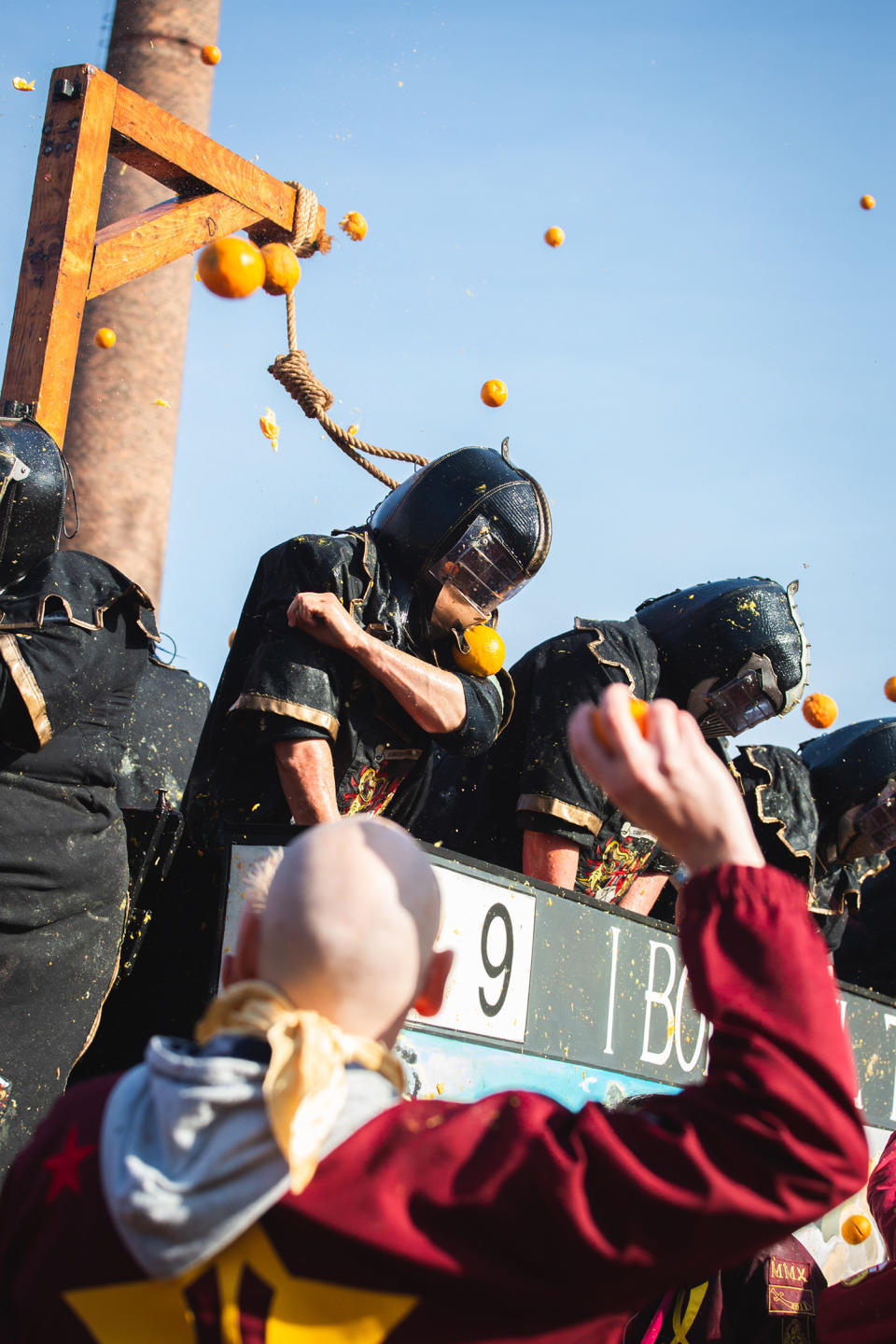
Team Mercenari bombards the float “Il Boia del Tiranno” (The Tyrant’s Hangman).
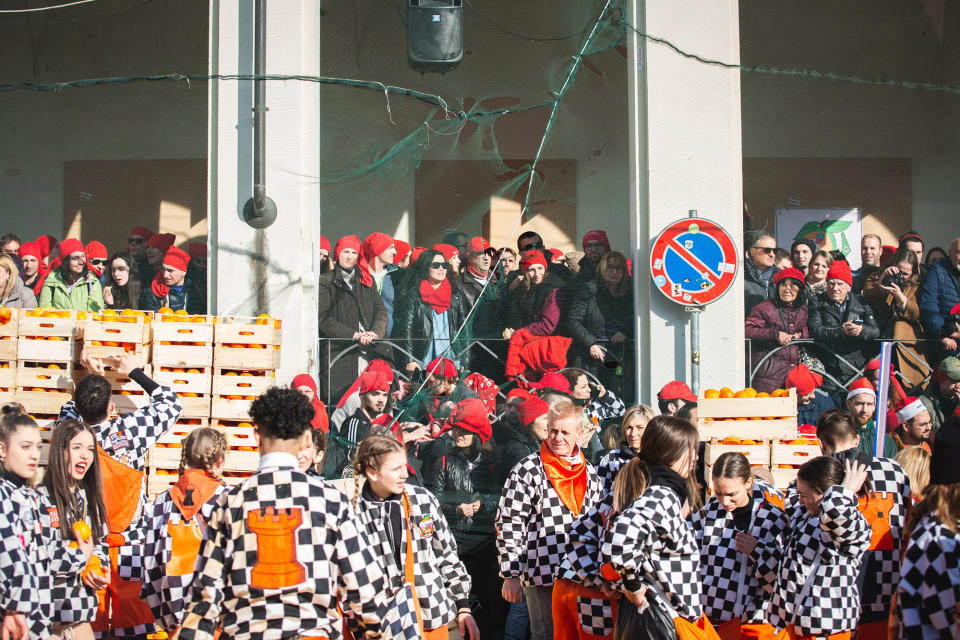
Team Scacchi, in the foreground, rests between two floats. Behind them, bystanders wear the “Beretto Frigio,” a red hat, as a sign of neutrality, to avoid becoming a target during the battle.
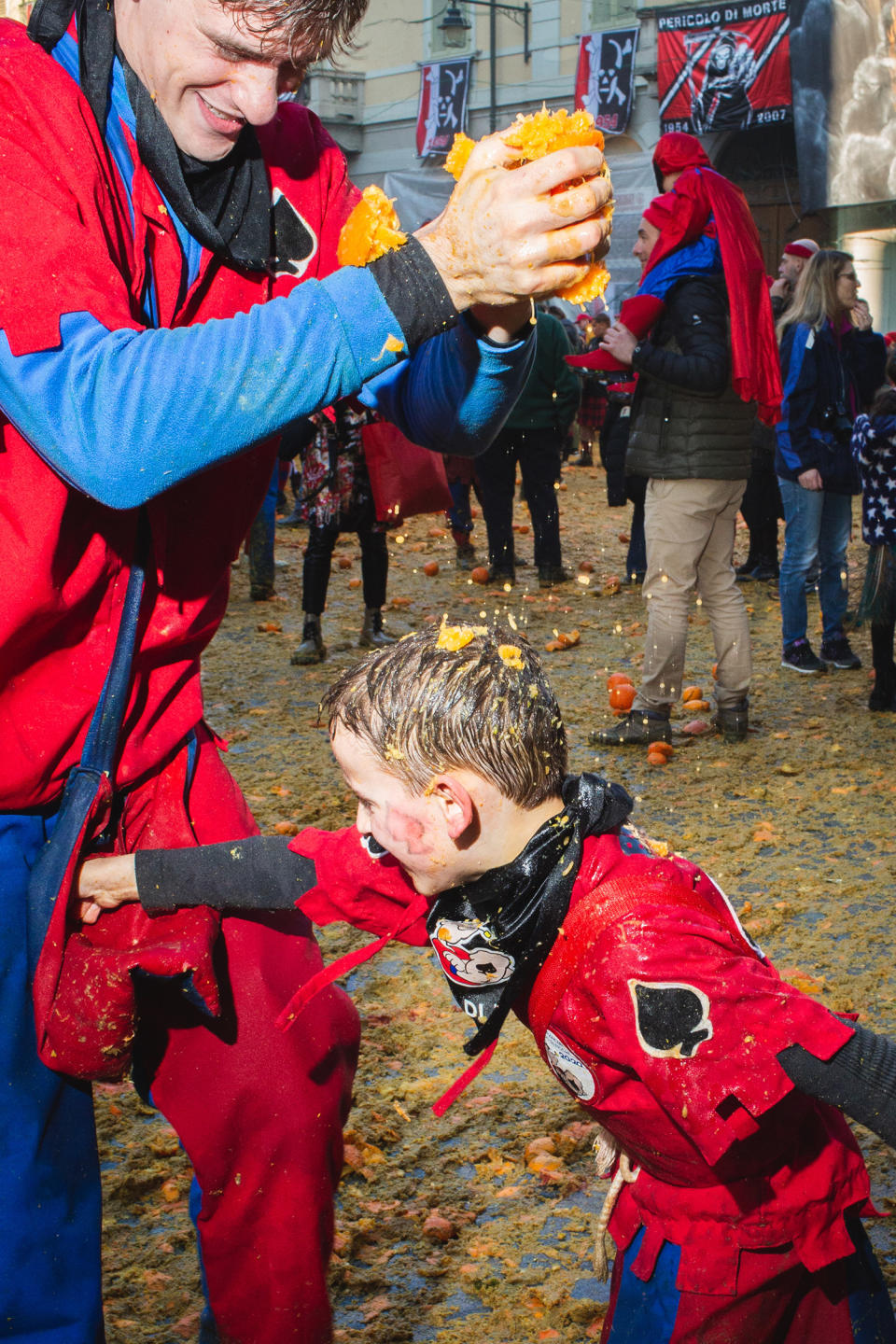
Bryan, 7, said, “During the battle, I like to hurt the guards of the tyrant on the floats. The only thing I don’t like is when I get juice in my eyes."
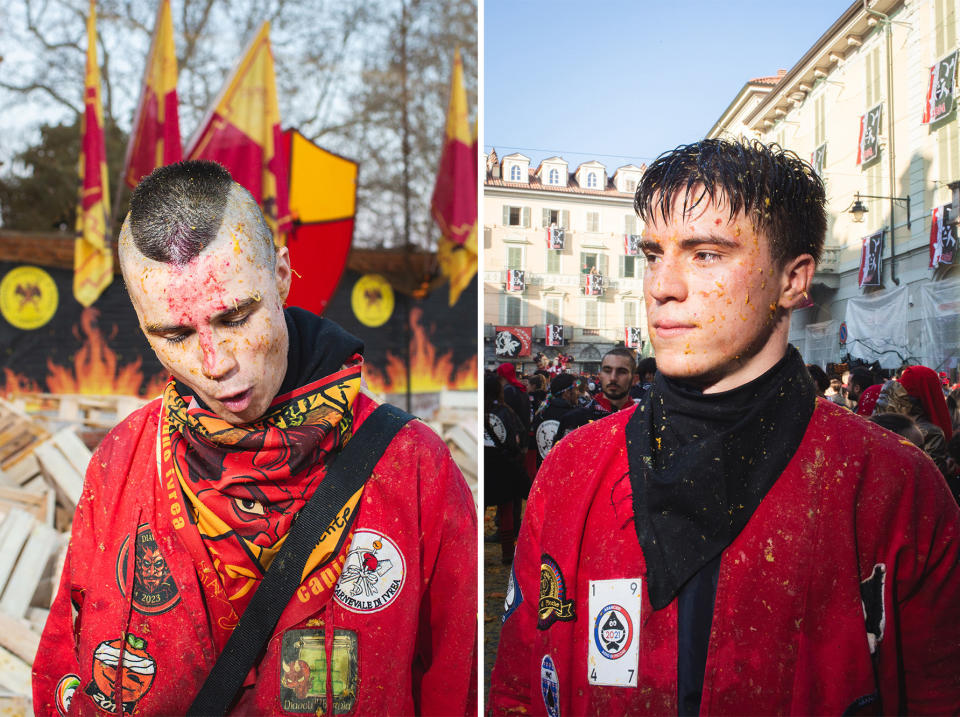
Alberto (left) attends Battles of the Oranges for his 12th time, "I like the adrenaline, and the fear before the first float passes." Alessandro (right) is on his eighth time being a participant.
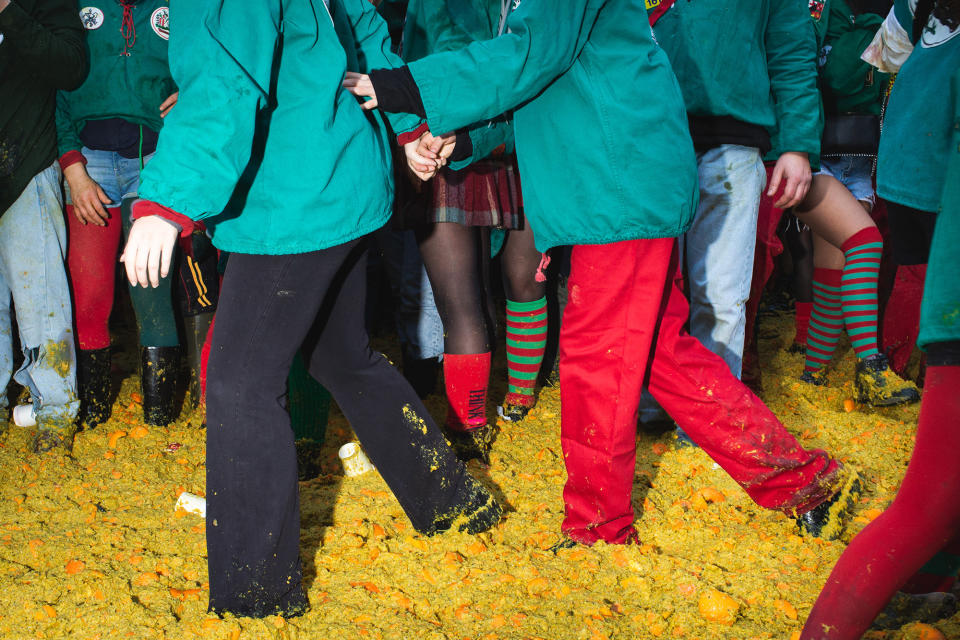
Members of Team Tuchini walk through a thick layer of orange pulp.
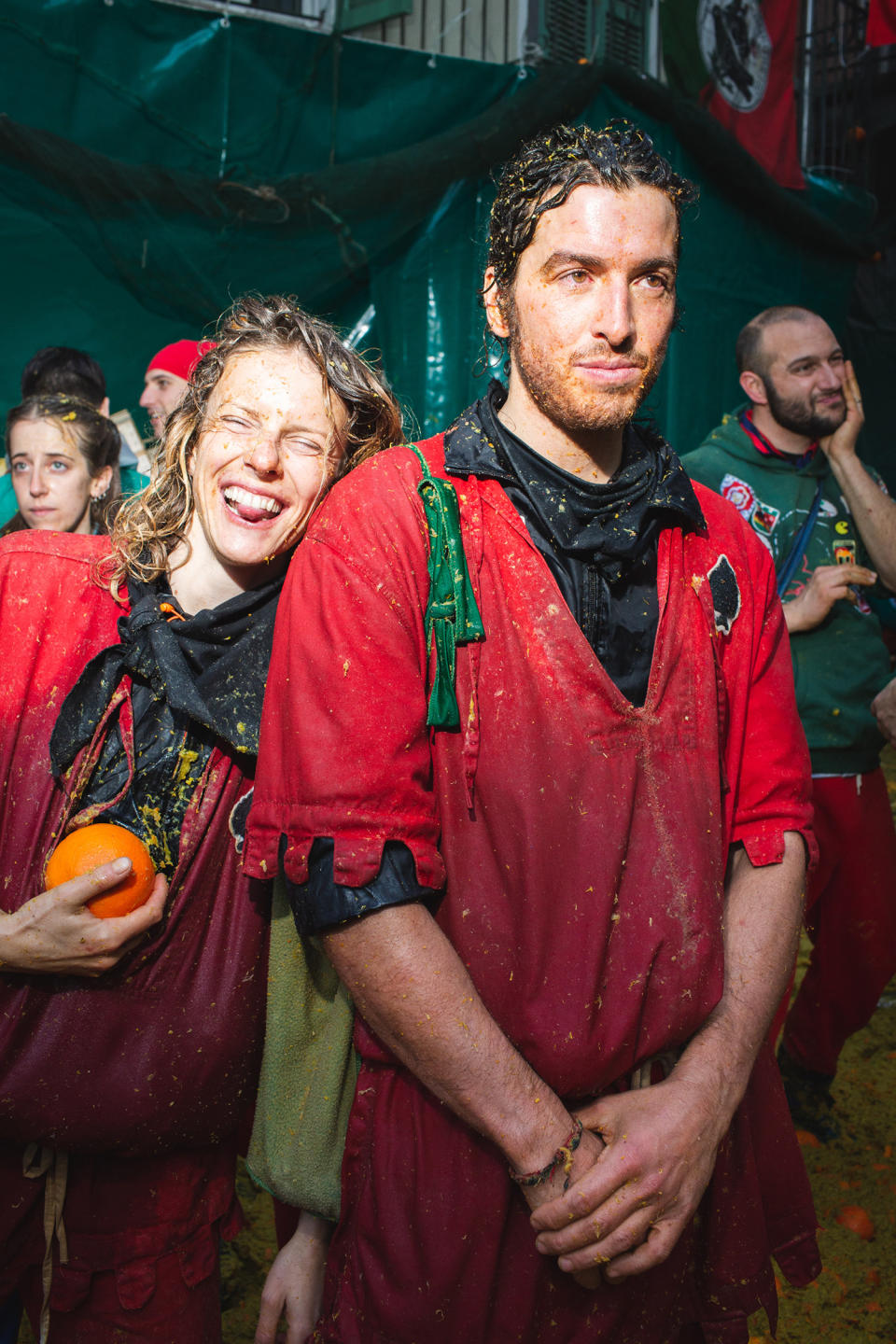
Susanna (left) and Matteo: “My boyfriend Matteo, from Ivrea, brought me to the carnival for the first time. It feels like living a parallel reality."
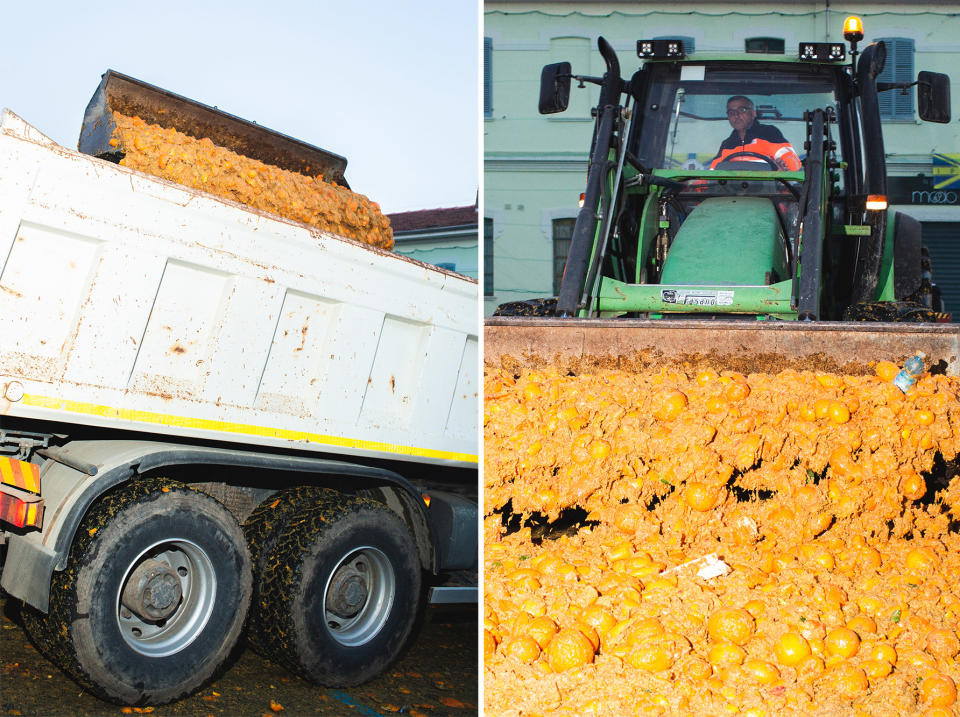
A bulldozer removes orange pulp from the streets after the Battle of the Oranges.

